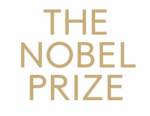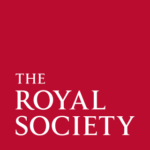From its earliest days the LMB has attracted and trained first class scientists from around the world – creating a diverse community for the exchange of ideas and technical innovation. The LMB provides excellent opportunities for early career and established researchers – people with the potential to lead their field. A high percentage of LMB students and post-docs stay in research or science related fields after they leave the LMB. The LMB supports the wider scientific community by supplying highly trained scientific leaders. They leave the LMB to develop and support molecular biology both in the UK and throughout the world.
Seismic progress possible for cancer research
LMB 1999-2021, Group Leader, PNAC Division
KJ Patel shares his optimism for progression in treatment and preventative measures for cancer within his current role as Chief Scientist at Cancer Research UK (CRUK), which began in October 2022. More…
Suzanne Cory and Joan Steitz in conversation

S. Cory: LMB 1966-1968, PhD Student, Molecular Genetics
J. Steitz: LMB 1967-1970, Postdoctoral Visitor, Molecular Genetics, 1977-1977, Scientific Visitor, Cell Biology
Suzanne Cory and Joan Steitz talk to Joan Heath about their memories of LMB in the 1960s, their careers since, and their thoughts on past and present challenges faced by women in science. More…
Morten Meldal shares 2022 Nobel Prize in Chemistry

LMB 1985-1986, Postdoctoral Visitor, PNAC Division
Morten Meldal shares the 2022 Nobel Prize in Chemistry with Carolyn R. Bertozzi and K. Barry Sharpless for “the development of click chemistry and bioorthogonal chemistry.” More…
From the LMB to food supplement development: Miriam Ferrer discusses her career
LMB 2005-2008, Career Development Fellow, PNAC
For Food Matters Live, Miriam Ferrer discusses her career to date, including her time at the LMB and how her passion for science was ignited by a documentary about DNA’s double helix. More…
Anthony Hyman is joint winner of 2023 Breakthrough Prize for Life Sciences
LMB 1984-1987, PhD student, Cell Biology
Anthony Hyman has been jointly awarded the 2023 Breakthrough Prize for Life Sciences. Anthony, along with Clifford Brangwynne, discovered an entirely new mechanism for cellular organisation that concentrates cellular interactions between proteins and other biomolecules in membraneless droplets. Their discovery helps to advance our fundamental knowledge of cellular organisation, and is likely to have impressive clinical applications too. More…
The Royal Society awards the Francis Crick Medal and Lecture 2023 to Tiago Branco

LMB 2012-2016, Group Leader, Neurobiology
Tiago Branco is the 2023 recipient of The Royal Society’s Francis Crick Medal and Lecture in recognition of his research into molecular, cellular and circuit bases of neuronal computation, and his successes in linking these to decision behaviour in animals. This award is given in honour of Francis Crick and was endowed by Sydney Brenner, both LMB alumni. More…